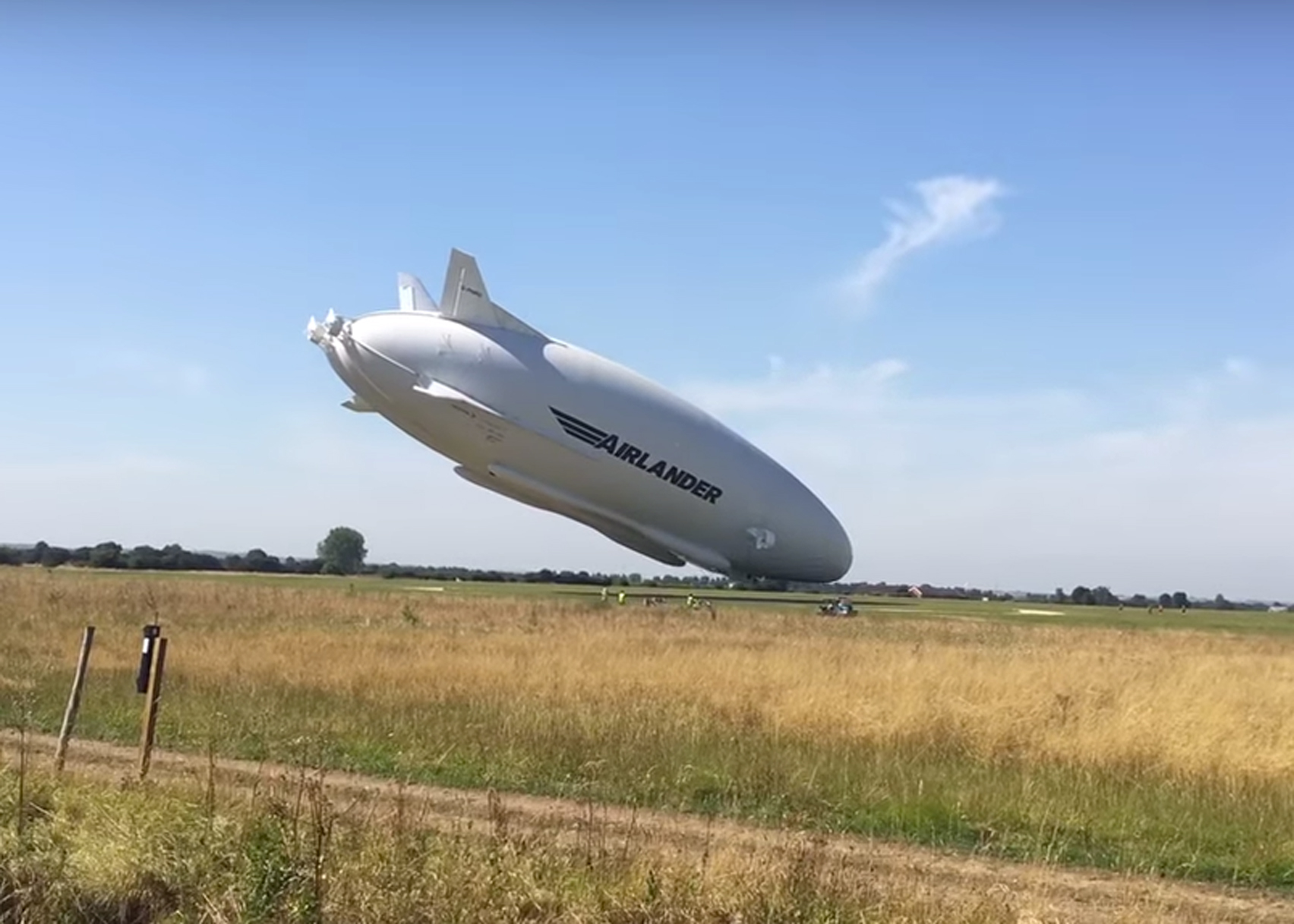The bulbous aircraft known as the "Flying Bum" has slowly nose-dived into a field during its second test flight in the English countryside (+ movie).
The vessel, widely acknowledged as the world's largest aircraft, had a "heavy landing" that caused damage to its front deck.
No one was injured in the incident, and the aircraft – officially titled the Airlander 10 – was returned to its normal mooring location for further assessment, according to a statement from manufacturers Hybrid Air Vehicles (HAV).
"The Airlander experienced a heavy landing and the front of the flight deck has sustained some damage which is currently being assessed," said the company.
Part plane, part airship, the Airlander 10 has been undergoing testing at the UK's Cardington Airfield in Bedfordshire in recent weeks.
The vessel has a devoted following thanks to its balloon-like shape, bisected down the middle, which earned it its Flying Bum moniker.
Chief test pilot Dave Burns proclaimed the Airlander 10 "flew like a dream" following its first test flight last week.
HAV said the Airlander 10 had, despite sustaining damage, completed all scheduled tasks during the second test flight, which lasted 100 minutes. The company intends to resume testing following an assessment of today's incident.
"Hybrid Air Vehicles runs a robust set of procedures for flight test activities and investigation of issues," said HAV. "We will be running through these in the days ahead as we continue the development of the Airlander aircraft."
HAV considers the Airlander 10 the future of air travel. Although it moves slowly, it has the capability to stay airborne for up to five days, due to its hybrid airship and aeroplane technology.
The vessel was originally developed as part of a US Army project, and is designed to be quieter and emit less pollution than traditional aircraft.
It can stay airborne for long periods because 60 per cent of its lift is produced aerostatically, by virtue of it being lighter than air. This allows it to float like a helium balloon.
The other 40 per cent of its lift is generated aerodynamically, as it is in aeroplanes, using the Airlander's wing-shaped hull.
The vessel's shell is made from a strong liquid crystal polymer called Vectran and filled with helium. It is 91 metres long and 26 metres high, making it the world's largest aircraft.
The Airlander 10's engines rotate to provide additional thrust upwards or downwards, which is how it can land, take off and hover.
Transportation designer Paul Priestman recently shared his alternative vision for the future of air travel with Dezeen. He said that advances in electric motors could see today's aeroplanes replaced by battery-powered, personal flying machines.

